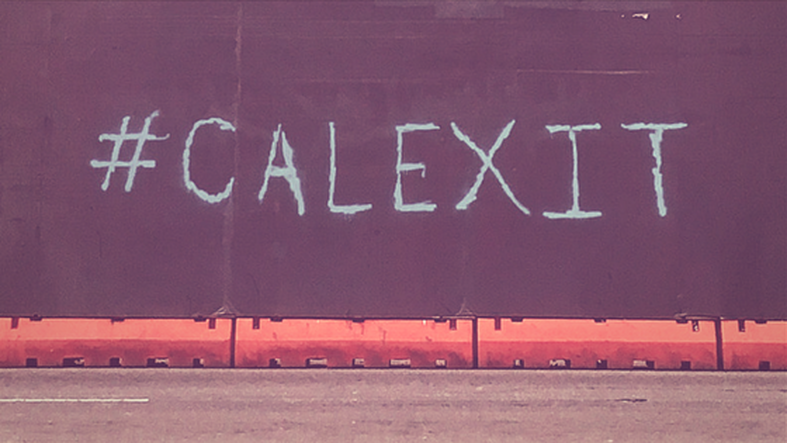Spiritual maturity is the result of a life-long process of growth. It takes intentionality, time, effort, and motivation. It doesn’t just happen, and it is not a natural gift that some have, and others do not. It is evident not in the habits and practices of a person, but in the ways a spiritually mature person relates to others. Someone who prays regularly and continues to blame others for their problems is not a spiritually mature person.
Spiritual maturity is not the result of following rules, advice, or practicing specific techniques. It is the result of an ongoing effort to determine what kind of person one wants to be. Rules, advice, and techniques may be useful, but they are not the answer.
We live at a time when advice givers, rule enforcers, and technique professionals are everywhere. In our quest to be our best selves, we have turned to short-term solutions at the cost of long-term gains. We have traded in personal responsibility at the expense of spiritual maturity.
The first arborist was an advice-giving snake.
When the snake appears in the book of Genesis, we are introduced to the art of advice-giving. Adam and Eve needed advice because they were confronted with the challenge of following the rules. In chapter 2, God gives Adam a rule for eating fruit. The first and only rule is to abstain from the tree of the knowledge of good and evil; eat from there, and you die. So the snake says to Eve, “It’s a lie. You won’t die.” For Eve’s part, she doesn’t repeat the rule just right. When she repeats the rule to the snake, she changes it to the tree in the middle of the garden. Adam probably did a terrible job explaining it to her. What is the punishment for following the advice of the snake? More rules (you can’t go back into the garden), and more rules, (honor father and mother), and more rules (if your son is stubborn, rebellious, and refuses to listen then kill him).
Perhaps the snake was the first congregational coach, “Do this. Don’t do this. That’s a lie. You won’t die. Try it, you’ll like it. I know best.” Churches pay top dollar for consultants to come in and tell them whose right and whose wrong, and what to do about it.
Of course, not all coaches slither. Some are good people. My effort here is to make a distinction between the good coaches and the, well, not so good coaches; the ones who engage the thinking of a leader, and the expert who doesn’t really care what you think. I think the distinction will get clearer as I continue.
The history of congregational development is splattered with experts telling congregational leaders how to act and what to avoid. There are probably more rules that have been written by experts than there are laws in the Hebrew Bible. For example, make sure you have enough parking spaces, make sure you have enough butts in the choir, and above all else, make sure you have a cool church name that references nature.
I’m not saying that having rules or giving advice is all bad. I’ve kept a few rules I’ve learned over the years: don’t pee on the electric fence twice and never call them jerks. However, being a spiritually mature person is about so much more.
While we can’t escape the need for things like rules, techniques, standard operating procedures, and advice the basic problem with all of them is what they deny. Rule enforcers, advice givers, technique instructors, and policy managers firmly believe they are helping others. But they often fail to recognize how the work they do is legitimized by highlighting the deficiency in others. Diagnosing a congregation as “problematic” reinforces the need to help others. As anxiety in the relationship system increases, the need to focus on the perceived problems of others also increases. Giving advice also has a way of elevating the tension, even though it’s offered with good intentions.
Dr. Murray Bowen was writing about the family, but this quote also applies to any relationship system, including congregations:
“. . . the family projection process is a triangular emotional process through which two powerful people in the triangle reduce their own anxiety and insecurity by picking a defect in the third person, diagnosing and confirming the defect as pitiful and in need of benevolent attention, and then ministering to the pitiful helpless one, which results in the week becoming weaker and the strong becoming stronger. It is present in all people to some degree, and by overcompassion in poorly integrated, overemotional people, powered by benevolent overhelpfulness that benefits the stronger one more than the recipient, and is justified in the name of goodness and self-sacrificing righteousness. The prevalence of the process in society would suggest that more hurtfulness to others is done in the service of pious helpfulness than in the name of malevolent intent.” Family Therapy in Clinical Practice, p 434.
What we are fundamentally dealing with here is an emotional process. It is an automatic response to an increase in anxiety in the relationship system. The relationship system can be both a congregation and a family. Those who are the most uncomfortable in a system will do their best to get things back to the way they were often by blaming someone for the problem. If their efforts are not successful, a consultant may be invited to provide an expert opinion and diagnosis of the problem. Consultants may promote a cure which includes having the congregation take a series of prescribed steps.
What is denied by advice-giving is the opportunity for leaders to think. Thinking solves more problems than accepting advice or learning techniques. It is the very thing that lowers anxiety. If heightened anxiety is the problem, then it’s time for congregations to abandon short-term solutions and focus on developing spiritually mature thinkers.
Spiritual maturity results from being a good thinker
In my faith tradition, we talk about the “mind of Christ.” It is rooted in the concepts of wisdom and holiness. To have the mind of Christ is to think higher thoughts. If we concede that our basic problem is a relationship problem, then the solution can be found in the way we relate to one another. Turning only to rules, techniques, and advice is an anxious response to the effort of relating to others. For example, how do I get the trustees to endorse my brilliant idea?
When we abandon technique as a guide for relating to others, we are left with thinking. What do I do with my anxious brain? How do a regulate myself when I’m upset? How do I relate to an overbearing member of the congregation? What do I think about our current financial crisis? How do I motivate someone to be a better leader? The answers to these questions do not contain solutions to the problem, but they do provide a path forward. It is about process, not content.
The act of thinking (not reactive thinking but reflective thinking) changes the dynamic of the relationship system. Thinking is the answer to a problem rooted in an emotional process. Thinking disrupts this process and allows for a greater capacity problem solve.
Having the mind of Christ, or having wisdom, is the result of an ongoing, sustained effort to inject maturity into everyday conversations. To inject maturity is to relate to others through the thinking system of the brain, which is consistent with holiness. It’s what gives us the capacity to manage the emotional process by functioning at a higher, more responsible level.
The prefrontal cortex is what distinguishes us from all other animals. It’s what gives us our unique awareness of ourselves. Reverend Peter Steinke refers to the prefrontal cortex as the heavenly lobes. It’s the difference between dogs who sit and eat out of a bowl and humans who sit, pray, and eat out of a bowl.
This does not mean that feelings are not important. Feelings provide the feedback needed for awareness of the emotional response. Feelings are like the gauges on a steam engine. As we observe our feelings, we can tell if things are moving along smoothly, when we need to increase the pressure, or when the whole thing is about to blow.
Thinkers stay in good, viable contact with important others.
The word mature has its origins in the word ripe. When the fruit is ready for picking, it is ripe. In the Christian faith, we talk about fruits of the spirit. Modern research on trees has revealed a vast underground ecosystem system that sustains tree life. There is constant contact between the trees and the ecosystem. Trees can even communicate with other trees through this system. This is an emotional process that keeps the trees alive. You can learn more about this by listening to a recent Radiolab podcast.
Families are like trees. They are in a constant state of reacting to the environment and to each other. The ability of the tree to reach maturity is related to how well it is connected to the earth, other trees, and the system’s ability to face challenges. Too much challenge and the tree breaks. Too little challenge and the tree never matures.
While you may desire to live like a giant redwood, steady and strong, our ability to be steady and strong has to do with our connectedness to our families, the environment, and our ability to manage ourselves in the face of challenge. This is an effort that requires thinking which can bring about long-lasting results. When faced with a challenge, a spiritually mature person steps back, works at being aware of what’s really going on both internally and externally, thinks about possible responses, and then acts. The process then repeats. This approach, what Dr. Bowen termed differentiation of self, has a proven track record.
Being a good thinker is about discovery and curiosity. Good questions to ask oneself are:
- What are my core beliefs and guiding principles?
- Where did these ideas come from?
- Are they mine or have I simply adopted them from others?
- How do I figure out the difference?
- At the end of the day, what kind of person do I want to be?
- What are the challenges I face in my family as I work on being this person?
I will be updating my website soon. I’ve been using the word “coaching” to describe the service I offer clergy and congregational leaders. I’ll be changing it back to my original idea which is “thought partner.” That’s what I am: someone who is willing to think with you about the problems you are facing whether it might be dealing with a problem in the congregation, a personal problem, or a problem with the family. Using Bowen Theory as my lens, I offer people an opportunity to become curious, discover, and learn all that one can from the challenges they face. If you are interested in having a thought partner, the first session is free.




 RSS Feed
RSS Feed